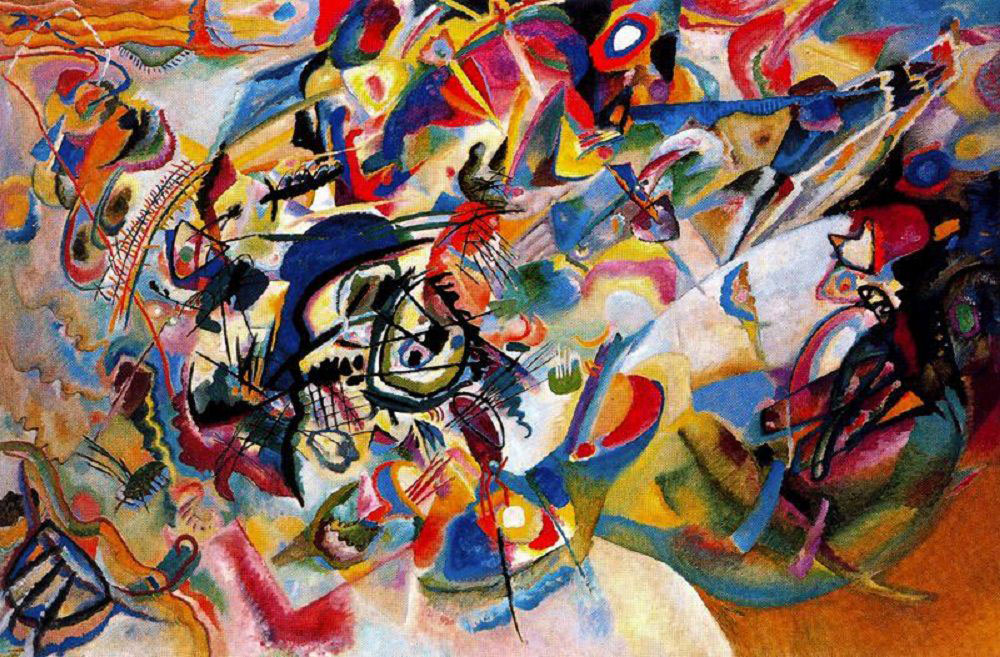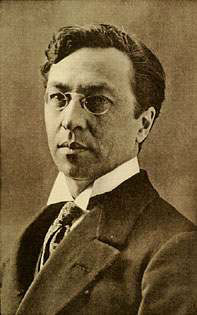Blended senses: understanding synaesthesia Understand article
What would it be like if numbers and musical tones had colours? People with synaesthesia experience the world in this way – and scientists are trying to find out why.

his coloured hearing
(auditory-visual
synaesthesia) in his music.
Image courtesy of Thomas
Hawk; image source: Flickr
What colour is Tuesday? This question may not make sense to most people – but to some people, known as synaesthetes, it’s perfectly understandable, although each is likely to have a different answer.
Synaesthesia literally means ‘joined perception’. It is a neurological phenomenon whereby a perception in one sense automatically evokes a sensation in another – so, for example, thinking about abstract ideas like numbers or days of the week evokes associations with specific colours. It’s not clear why this happens, but synaesthesia is increasingly being studied scientifically in order to unravel the factors involved. So far, links to both neurological and genetic factors have been found.
Types of synaesthesia
A large study in the UK revealed that about four per cent of the population experiences a form of synaesthesia (Simner et al, 2006). Often, synaesthetes have no idea that their cross-sensory associations are unusual, even though they may experience several different types. Cross-sensory associations evoked by stimuli such as letters, numbers and musical tones are known for every physical sense – from visual sensations such as colour, to sounds, smells, textures and even tastes.
One of the most common forms is grapheme-colour synaesthesia, which is the association of letters and numbers with specific colours. At the other extreme are the captivating stories of people for whom words have tastes (lexical-gustatory synaesthesia), and musicians like Pharrell Williams who use their coloured hearing to shape their music (auditory-visual synaesthesia).

Image courtesy of Galilea; image source: Wikimedia Commons / German Wikipedia

Public domain image; image source: Wikimedia Commons
Grapheme-colour synaesthesia is the most widely researched form, because it is easy to study using simple tests. Large studies comparing grapheme-colour synaesthetes to each other and to non-synaesthetes have revealed much diversity even within this one type of synaesthesia. For example, some grapheme-colour synaesthetes see the evoked colours projected into their surroundings, while others perceive them only mentally, with their ‘mind’s eye’. Another finding is that most synaesthetic associations are very personal, and each grapheme-colour synaesthete’s vibrant alphabet is unique to them. Perhaps surprisingly, however, the letters I, O, X, and Z tend to be labelled as black or white by most grapheme-colour synaesthetes, even within an otherwise rainbow-coloured alphabet.
So what type of people are most likely to experience synaesthesia? One recent study that screened thousands of people for synaesthesia has overturned a long-held belief that the phenomenon is more common in women (Simner & Carmichael, 2015). Leading autism researcher Simon Baron-Cohen has found that synaesthesia is more common among people with autism (Baron-Cohen et al, 2013), a finding that links to the extraordinary case of Daniel Tammet, a high-functioning autistic man with multifaceted synaesthesia. In 2004, Tammet used his synaesthesia to help him memorise and recite the mathematical number π (pi) to over 20 000 decimal places.
Musical textures
Svetlana Rudenko, an accomplished, Ireland-based pianist, experiences a complex form of musical-space synaesthesia in which sounds become textured images in the space around her. Describing how music and vision are tied together in her perception, she says, “I see the screen of sound waves, and I control my memory by reading it during playing and manipulating it in time … to hear all the elements of musical texture.” This led to some challenges while she was learning to play the piano. “I could not do crescendo and diminuendo (gradually becoming louder or quieter) like other students do,” she says. “For me, image is very connected with sound; in order to change the sound, I have to rethink the image”. Today, Svetlana uses her cross-sensory perceptions in her teaching, adapting her impressions to help her students learn to perform complex pieces. “I use a lot different coloured pencils to mark layers of musical texture,” she says. “By marking those changes with different colours, I am giving my students guidance to create their story of the piece and boost their imagination.” She finds that this multisensory approach to piano instruction works best with her youngest students.
What causes synaesthesia?
While many synaesthetic experiences seem quite exotic, we all have a tendency to link qualities of different senses together – a phenomenon known as cross-modal association. For instance, people tend to agree that higher-pitched sounds should ‘go with’ lighter colours, and sounds that are deeper belong with darker colours.
So what exactly is different about the synaesthetic brain? Neuroimaging studies show differences between synaesthetes and non-synaesthetes in how the brain is structured, pointing to a biological basis for this phenomenon. A study in 2007 showed that people with grapheme-colour synaesthesia have stronger connections in some areas of the cortex (Rouw & Scholte, 2007), while other studies have found that these people have more activity connecting the colour-processing areas of the brain to other regions (Tomson et al, 2013).
Could there also be a genetic basis for synaesthesia? In 1883, Francis Galton reported that synaesthesia seemed to run in families (Galton, 1883). The current view is that synaesthesia is at least partially genetic: studies of families with multiple synaesthetes have found several areas in the genome associated with the phenomenon (Asher et al, 2009; Tomson et al, 2011). These studies were too small-scale to point to specific genes, so a large-scale genetic study of grapheme-colour synaesthetes is now underway, led by Simon Fisher at the Max Planck Institute for Psycholinguistics in the Netherlands.
Synaesthesia in the classroom
As the place where alphabets, numbers and the calendar are committed to memory, the classroom can play a central role in the development of synaesthesia. Studies in the UK following children in primary schools over several years have revealed that synaesthesia can take time to develop: the few children in each primary school who became grapheme-colour synaesthetes began forming the associations during early school years, and settled on the colours of their alphabet gradually (Simner & Bain, 2013). Such children chose consistent colours for 34% of the alphabet at ages 6–7, 48% by ages 7–8, and 71% by ages 10–11.
Teachers or parents often become aware of a child’s synaesthetic associations when he or she makes a comment that seems to blend two senses – for example, an upset stomach that “feels yellow”, or someone using the “wrong colour” to write the word Tuesday. Unless a child reports that her or his perceptions are interfering with their learning, synaesthesia is likely to be just part of the background of how they experience the world with no adverse consequences.
But can synaesthesia be beneficial in the classroom? Anecdotes and research suggest yes, sometimes. People with grapheme-colour synaesthesia often say that the colours help them remember phone numbers or other numerical information; and in psychological studies, synaesthetes perform better than non-synaesthetes on some memory tasks when they can use the extra features to help them remember (Watson et al, 2014). In his book Born on a Blue Day, Daniel Tammet describes how his sense of each number’s unique colour, shape and location in space helps him to solve complex mathematical equations with lightning speed (Tammet, 2006).

Public domain image; image source: Wikimedia Commons

Past and present
Synaesthetic sensations have sometimes been interpreted as supernatural, due to the seemingly other-worldly nature of this phenomenon. Neuroscientist and author VS Ramachandran reported the unusual case of a young man whose synaesthesia took the form of seeing coloured halos around people’s faces. This case perhaps suggests an explanation for stories from folklore about people who see auras (Ramachandran et al, 2012).
Today, our advancing knowledge of synaesthesia’s biological basis in the brain is moving these associations out of the spooky realm and into the laboratory. Synaesthesia is remarkable in that the impressions it generates are both deeply subjective and quite stable for each individual. In this way it reminds us that, while we may agree that (for example) a tomato is red or that two plus two equals four, our inner experience of the ideas involved in such apparently factual statements is varied and personal.
References
- Asher JE et al (2009) A whole-genome scan and fine-mapping linkage study of auditory-visual synesthesia reveals evidence of linkage to chromosomes 2q24, 5q33, 6p12, and 12p12. American Journal of Human Genetics 84: 279–285
- Baron-Cohen S et al (2013) Is synaesthesia more common in autism? Molecular Autism 4: 40
- Galton F (1883) Inquiries into the human faculty and its development. New York, USA: AMS Press
- Ramachandran VS et al (2012) Colored halos around faces and emotion-evoked colors: a new form of synesthesia. Neurocase 18: 352–358
- Rouw R, Scholte HS (2007) Increased structural connectivity in grapheme-color synesthesia. Nature Neuroscience 10: 792–797.
- Simner J, Bain A (2013) A longitudinal study of grapheme-color synesthesia in childhood: 6/7 years to 10/11 years. Frontiers in Human Neuroscience 7: 603
- Simner J, Carmichael DA (2015) Is synaesthesia a dominantly female trait? Cognitive Neuroscience 6: 68–76
- Simner J et al (2006) Synaesthesia: the prevalence of atypical cross-modal experiences. Perception 35: 1024–1033
- Tammet D (2006) Born on a Blue Day. London, UK: Hodder & Stoughton. ISBN: 9780340899748
- Tomson S et al (2013) Neural networks of colored sequence synesthesia. Journal of Neuroscience 33: 14098–14106
- Tomson SN et al (2011) The genetics of colored sequence synesthesia: Suggestive evidence of linkage to 16q and genetic heterogeneity for the condition. Behavioural Brain Research 223: 48–52
- Watson M et al (2014) Synesthesia and learning: a critical review and novel theory. Frontiers in Human Neuroscience 8: 98
Resources
- For popular accounts of synaesthesia, see:
- Ward J (2008) The Frog Who Croaked Blue: synesthesia and the mixing of the senses. London, UK: Routledge. ISBN: 9780415430135
- Cytowic R, Eagleman D (2009)Wednesday is Indigo Blue: discovering the brain of synesthesia. Cambridge, USA: MIT Press. ISBN: 9780262012799
- For more about his paintings depicting particular numbers and his book Born on a Blue Day, visit Daniel Tammet’s website.
- For answers to some frequently asked questions about synaesthesia, visit the website of the University of Sussex.
- Visit the website of the UK Synaesthesia Association.
- Visit the website of the American Synesthesia Association.
- To take part in a study to investigate the genetic basis of synaesthesia, visit the website of the Max Planck Institute for Psycholinguistics.
- For some tests to identify many different types of synaesthesia, have a look at Baylor College of Medicine’s Synesthesia Battery.
- To learn about scientific research into another seemingly other-worldly experience, see:
- Paterlini M (2010) Exploring out-of-body experiences: interview with Henrik Ehrsson. Science in School 15: 4–7.
Review
This article challenges the reader to learn more about synaesthesia and to admire the complexity of the human brain. It could be used for discussions on questions such as:
- How do humans respond to sensory stimulation?
- Is a perception the same for every person triggered with the same stimulus?
- What do we define as normal?
Alina Giantsiou-Kyriakou, Livadia High School, Larnaca, Cyprus





